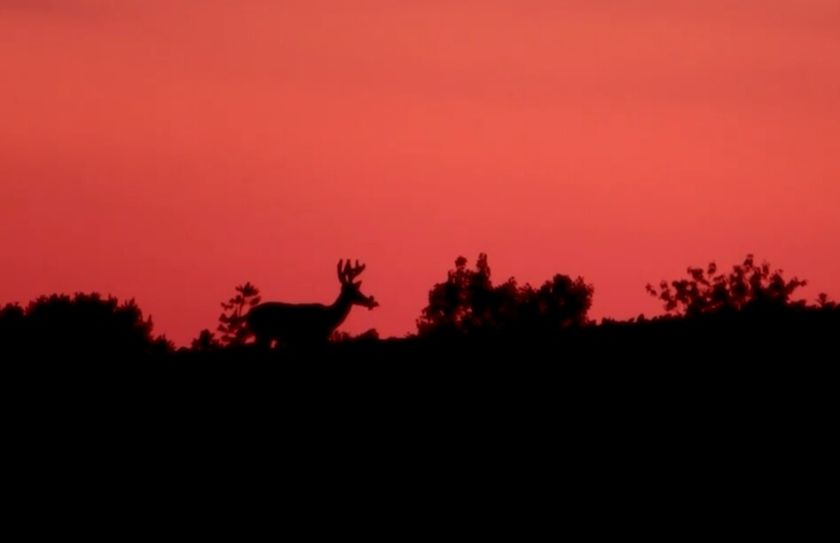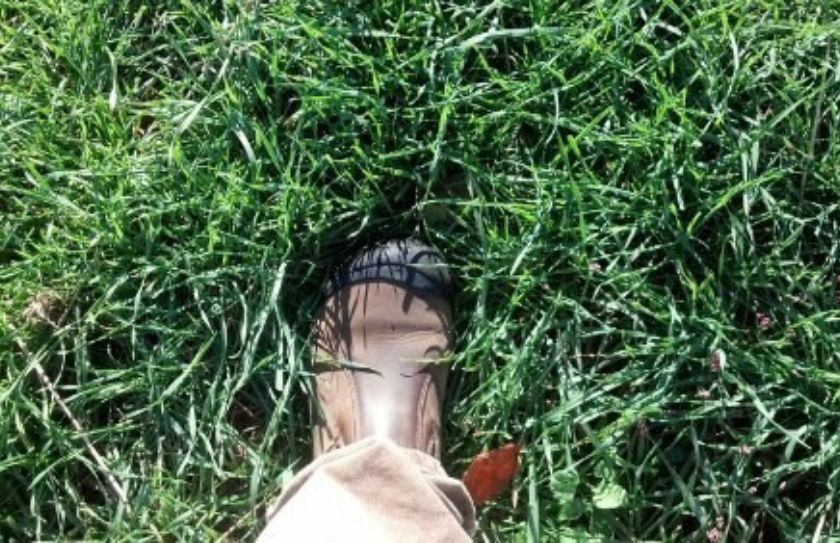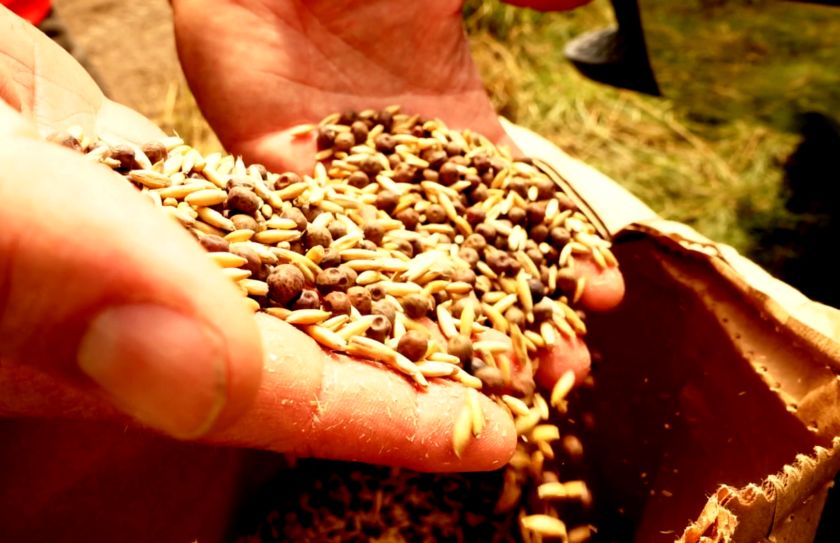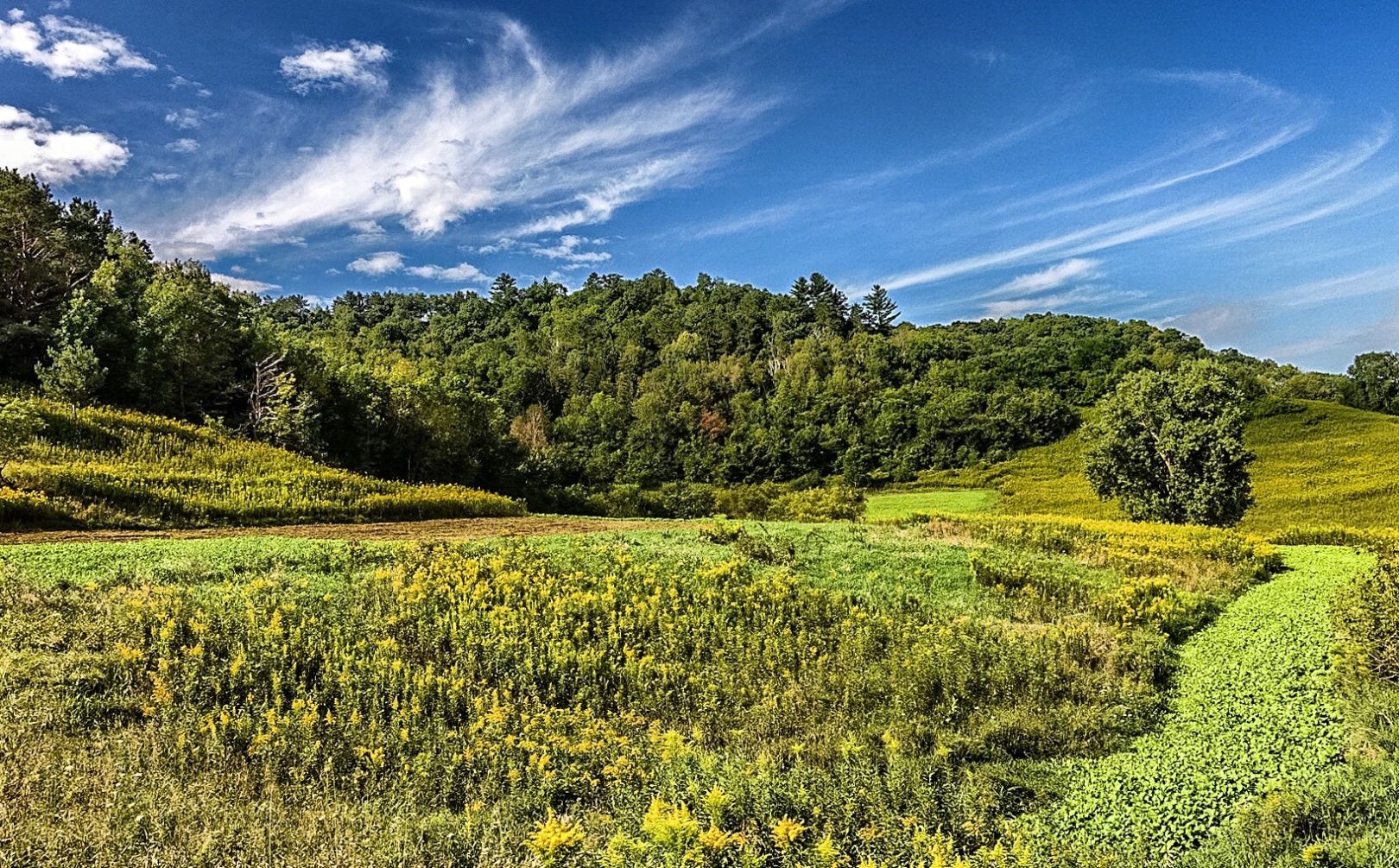
How many acres of food plots should you plant?
The answer to that question varies greatly from region to region, and there is absolutely no set % that will work for more than just a fraction of all whitetail parcels. However, most parcels of land and hunting conditions dictate a fairly accurate range of somewhere between 2% and 15%. How many acres of food plot plantings do you need specifically for your land, to accomplish the majority of common hunting and herd management goals?
Throughout the years, a concept of food that I have experienced is that a certain amount of cover needs to be supported by a certain amount of food, in order for the parcel to reach its maximum potential in attracting, holding, and building a deer herd. That concept may seem elementary, but with the incredible focus of cover in terms of bedding areas, native grass and other plantings, I think it's important to recognize that it is entirely possible to have too much cover
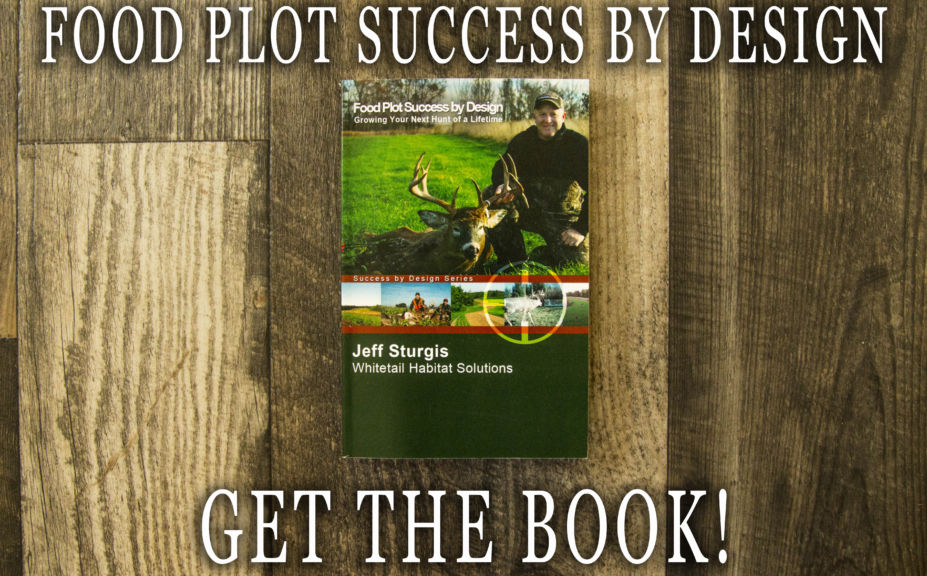
*This is an updated excerpt from my latest book, "Food Plot Success By Design". To check out the reviews or to place an order please visit "Whitetail Habitat Solutions: Books". Thank You!
Having too much cover was reinforced quite drastically in 2008, when I had the unfortunate experience of not being able to plant our typical 6 acres of centrally located food plots on my Southwest Wisconsin lease. We missed a spraying of weed growth in June, and by the time we arrived to spray for the last time and plant in late July, the weeds had shot from several inches to a few feet, making it almost completely prohibitive to establish our plantings. Because of this, the deer herd that still occupied the outskirts of the 120 acres of cover on our property completely changed their movement patterns in just one growing season. Instead of focusing into the inner portions of our parcel just prior to dark to feed on the food plots that we provided, the deer quickly focused outward towards the agriculture fields that surrounded our property within 1/2 mile in virtually every direction. The weed growth that took over our food plots was the perfect cover compliment to the CRP grasses and weeds that filled the 67 acre field, but was that a good thing? We ended up with roughly 190 acres of cover, with the highest diversity of cover towards the center of the parcel. Without a lot of surrounding hunting pressure and the best of neighborhood food sources located a substantial distance from our borders, we had to hunt long and hard to attempt to experience quality hunting, by primarily focusing on our parcel borders.
Lacking the balance between food and cover in 2008, a large portion of our property was inefficient, as we unfortunately experienced a surplus of cover that was certainly too much of a good thing. Many chapters in this book will discuss the benefits of using food to attract deer, direct deer, hold deer, protect deer and kill deer, but this chapter will focus on how you can use food to support a particular amount of cover that may be available on your hunting parcel. Many pages could be written about how much food is needed for particular habitat types, regions of the country, regions of your state and for various parcel sizes. However, I will focus on three different parcel types, including: big woods or wilderness areas, mixed habitat agricultural regions and cover starved high-production agricultural areas.
Big Woods or Wilderness "High Cover" Settings
In 1999, my wife and I purchased 120 acres of tag alders, mixed conifer, red maple, and scattered young beach, aspen, and pin-cherry that was located behind our home in Michigan's Upper Peninsula. The soils were sandy, a river and creek flowed through the parcel, and regardless of whether a person hiked North or South through the adjacent public land, it was five miles or more before they would run into a year-round road. There was an endless sea of remote, and mostly hunter-less, public land surrounding the parcel. A herd of less than 20 deer per square mile inhabited the remote wilderness setting and focused primarily on the various patches of hardwoods that dotted the area among the minimal areas of high ground. With over two miles of sandy access trail snaking through the parcel, that were built for logging activities in the early 1980's, it was at first disheartening to walk the property for several days following a summer rain, and find zero deer tracks.
The deer population was small, scattered, and lacking only one thing: a quality food source. In 1999, I started with one 1/4 acre food plot. By 2006, the food plot acreage had expanded to 14 plots that occupied approximately 8 acres. Not surprisingly, the deer herd increased with the food plot expansion, from one spikehorn captured on camera, to a total of 17 different bucks caught on film in 2006, with several dozen scrapes and hundreds of rubs. It was apparent that the need for food in this region was critical. Similar to what I have experienced in other high-cover regions, this need for food was independent of the number of deer. Simply put, without the addition of food to the parcel, a deer herd could not have been attracted, held, built, managed or enjoyed.
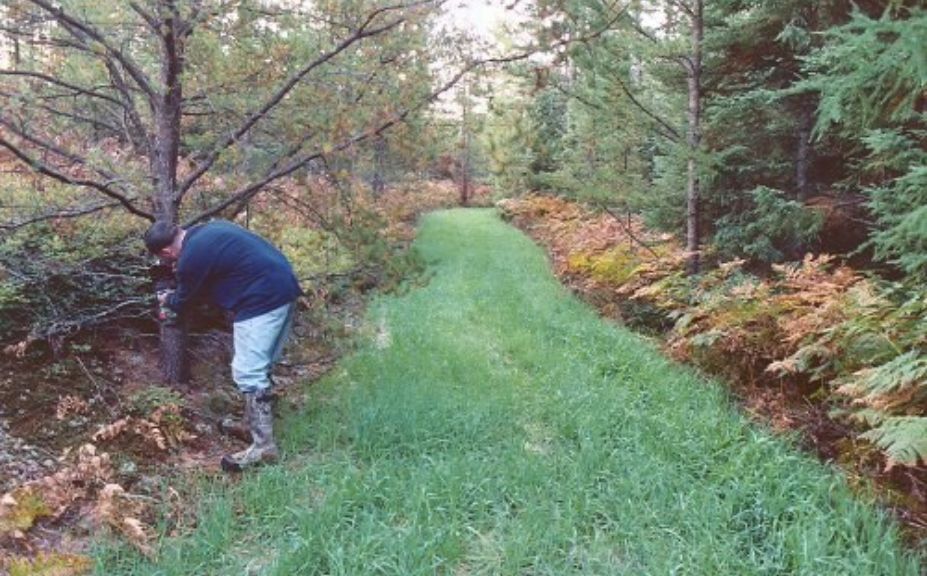
*On many wilderness or big-woods tracts of land it is almost impossible to attract, hold and grow a deer herd without the addition of quality food sources. Once the balance of food has been addressed, then habitat improvements can be made to define exactly where the attracted deer bed and travel while relating to quality food. How fast can a wilderness parcel change with a solid food plot program and non-invasive hunting strategies? Try reading "Attracting A Buck Herd".
The amount of food needed in a setting like this does not necessarily relate to the size of the parcel. Instead, the amount of food depends on the size of the area from which deer are being attracted, including their daytime bedding areas which may or may not be found within the parcel borders. I found that although the bulk of the doe family groups lived within the parcel borders, the majority of the buck population chose to bed along the fringe areas of the parcel borders, behind the doe family groups, and up to a quarter mile away. Because of the low hunting pressure on the surrounding public land acres, the movement between bedding areas and the evening food source encompassed a minimum of 500 acres. I also discovered that 8 acres of food was not enough!
Acres of food plot needed for big woods or wilderness settings: 10-15%
Because the combined 8 acres of food plots was the only high quality food source in the entire area, the planted forages received an unusually high amount of feeding pressure. I was still several acres away from being able to provide quality food throughout the entire hunting season, and it was not because of a deer population that was too high. Rather, the food plots were attracting deer in this low-population deer herd from a very large surrounding area. Providing enough food in a high-cover setting is extremely difficult, and you should attempt to provide food acreage that is at least 2-3% of the area from which you expect to be drawing deer. For example, if I was truly drawing deer from a 500 acre area that included the 120 acres that I owned (as well as unhunted public land), then my goal should have been to offer between 10 and 15 acres of food throughout the hunting season. With only 8 acres of food, I was a certainly a little short! 15 acres of food plots could have pushed my food plot acreage to well over 12% of the total land acreage that I owned, which still would have only been 3% of the area that I was attempting to attract, hold and pattern deer from.
The answer of the acreage of food necessary for your parcel may be less a game of numbers and more of a game of access and resources. It may be a more realistic goal to offer as much food as possible relative to your personal resources of land clearing and planting costs, while still being able to access your property without spooking any deer that are feeding within the plots that you have created. Even though I learned over the years that the need for food was very high on my parcel in Michigan's Upper Peninsula, it was necessary to eliminate one of my prettiest plots simply because it offered too much of an opportunity to spook deer while accessing an important part of the parcel. Therefore, while it's important to have an appropriate amount of food in a high-cover area and to set up your food plots in a way that minimizes social stress while the deer are approaching and feeding, the food sources should still be established in locations that encourage a consistent pattern of deer movement throughout the parcel.
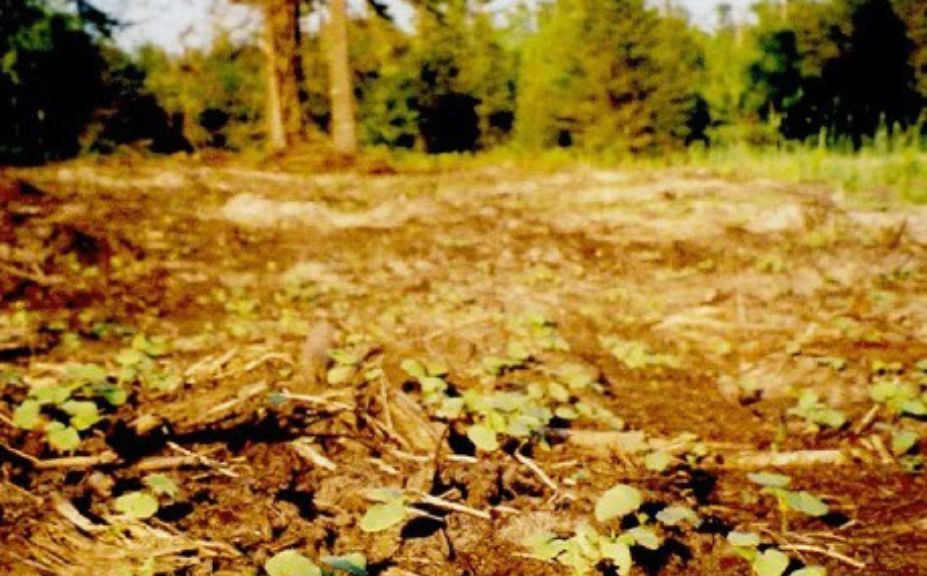
*Buckwheat is a great Summer starter planting for poor soil food plots. How fast can poor soils improve? Check out "Food Plot Success On Poor Soils".
Mixed Habitat Agricultural Regions
In a high-cover wilderness or big woods setting the food you offer may often be the complete destination and focus on the local deer herd. However, if your parcel is located within a mixed habitat agricultural region, there is one factor that you should attempt to take advantage of - food support! What I mean by this is that the food that you offer is not the only game in town. Rather, it is a strong compliment to the seemingly endless supply of typical agricultural offerings such as beans, corn, and wheat.
In areas that are roughly 50% cover and 50% agricultural, you should expect a different type of focus on your food plots. Instead of deer camping out within and around your plots all night, look for a large portion of the deer herd to filter off your parcel and into the nearby agricultural fields. On my Southwest Wisconsin lease parcel, we actually have more pictures of mature bucks in our food plots during the day than under the cover of darkness. We have a strong showing of mature buck pictures at all times of the day during the pre-rut and rut phases, and just prior to dark and after dark during the rest of the hunting season.
Your primary goal in this type of habitat setting should be to offer enough food to keep the local deer herd interested until darkness settles in, and then to send those deer into the local fields to dine and bed the majority of the night. Because the deer are not feeding on your parcel multiple times during the night, you may actually find that a smaller amount of acreage is needed to plant. For example, on my Northern Michigan parcel of 120 acres, 8 acres of food was several acres short. On the other hand, on my Southwest Wisconsin lease parcel of 190 acres, that included a deer population more than twice the size of my Michigan parcel, 6 acres of food lasted the entire hunting season, and even several weeks longer as well.
Acres of food plot needed for mixed agricultural regions: Roughly 5%
If your parcel is located within a 50% agriculture and 50% cover region, a general guideline is to offer approximately 5% of the wooded portion of your parcel in food. A higher percentage of food is appropriate for parcels smaller than 80 acres, while a lower percentage of food may be needed for parcel sizes larger than 80 acres.
Another variable to consider is the amount of your area that is devoted to agricultural production. If you are located in an area with less than 50% in agricultural production, then you can increase the amount of acreage planted for deer. The opposite is true for areas that feature a higher percentage of agricultural production than cover. Again, look at the surrounding agricultural land as food support. By using those food sources to your advantage, you can locate your food plots and feed deer in a way that helps to establish a strong pattern of movement between daytime bedding areas and nighttime food sources. Even though the amount of food plot acreage that is necessary decreases as the amount of food support on surrounding lands increases, there is still a priority that needs to be placed on offering food on even the largest of agricultural settings!
For a great recommendation on what to plant, check out the video below!
Cover-Starved High Production Agricultural Areas
The 20 acre patch of cover was incredible! The location was North central Ohio and it was early January. A combination of hardwood cuttings and habitat plantings that included both shrubs and conifers had been planted to produce an outstanding mix of multiple bedding area components. The only problem? ZERO deer! The deer were long gone and the reason was an unpicked bean field a mile to the North, across an entire section of plowed agricultural fields.
*A 1 mile by 1 mile section of agricultural land can seem like a virtual desert of deer holding potential. However, deer are typically used to a lot less elbow room in regions such as this, and small amounts of cover often support large #s of deer. Food plots should still be used to attract deer, hold deer and define movement but efforts should be made to mimize the effects of the food on the remaining core acres of cover.
This is not an isolated case of spooked or tainted cover in some way, but is instead a pattern I have observed in many regions where cover is not complimented by food. Almost 25 years ago I was amazed at the complete lack of deer tracks within the lower Michigan 10 acre woodlot where I was planning a late-season bowhunt. The lack of sign was so overwhelming after a fresh snowfall that I simply sat in the woods that night to enjoy the scenery with very little expectation of actually seeing a deer, let alone shooting one. While eating Christmas dinner the next evening the reason for the lack of deer sign became extremely obvious, as a line of over 50 deer traveled from the woodlot a quarter mile to the North, across the fields to attack the only standing corn field left in the area. A consistent concept has carried through for decades - the lack of food can eventually equal a lack of deer, even within a high quality cover parcel located in an area starved for cover.
At the same time, too much food on a small patch of cover can destroy the parcel's ability to attract, hold, and offer a daytime deer herd to actually hunt. As parcel sizes shrink from 40 acres to 10 acres or less, food needs to be offered in a way that maintains the integrity of the cover. Furthermore, when you add in the practice of needing less food in areas with a high percentage of agricultural land, it pays to be conservative when adding food to your cover, when your cover is located within a cover-starved location.
Acres of food plot needed for cover-starved high production ag regions: 2-3%
If you can imagine a mature buck cruising through the food plot on your property at anytime during the middle of the day while he is feeling safe, secure, and unpressured, that's a good start! However the most important questions is this: can you walk around your parcel without potentially spooking deer that are either feeding in your plots or holding within their daytime bedding cover? It's great if you have hidden and secure plots on your parcel that are conducive to mature buck movements, but if those plantings are located such that you can't access your property without spooking deer, then those plots either need to be relocated, reduced in size, or eliminated. In general, a minimum plot size of a 1/4 acre should typically be used wherever food is needed, even on the smallest of parcels. As parcel size approaches 40 acres within a coverless agricultural region, 2-3% of your total acreage in food plots is a good, rough estimate without overdoing it.
A recent client of mine had an outstanding 8 acre parcel, located between an 80 acre sanctuary of unpressured habitat on the north side of his parcel and mixed high-quality cover transitioning into agricultural land to the south. Using a food plot on a parcel of this size can still be a great idea if you focus on two important goals: hidden mature buck attraction, and secure daytime mature buck movement.
In order for a food plot to be hidden on a small parcel, the plot has to be small. A 1/4 acre food plot may seem pretty small, but when it is planted within a 1/4 acre opening on a small parcel it has the potential of being harder to hide and disrupting the natural flow of the deer herd through the parcel. In contrast to a quarter acre opening, I think it's a great practice to shrink that quarter acre space to several hundred feet in length. In the case of my client, I suggested a quarter acre planting that was 12-14 feet wide and stretched for roughly 250 yards long. With this type of setup, deer feeding within the food plot were just a few feet away from completely hidden security.
Long and thin food plots have their place on a parcel of any size, but on a small parcel they should be the rule rather than the exception. Long and thin plots on a small parcel minimize the potential of negative impact, while encouraging the likelihood of daytime mature buck movement. By pulling down overhanging limbs and creating mock scrapes along the edges of long narrow plots, you can offer highly defined patterns of movement that will help you to better position stand locations and access your parcel without spooking deer. Secure, thin, full of scrapes and possibly an apple tree or two, my client's quarter acre narrow plot will have the potential to be one of the hottest mature buck daytime cruising routes in the area, with both ends of the plot turning back into and ending into some of the best daytime security cover on the entire 8 acres.
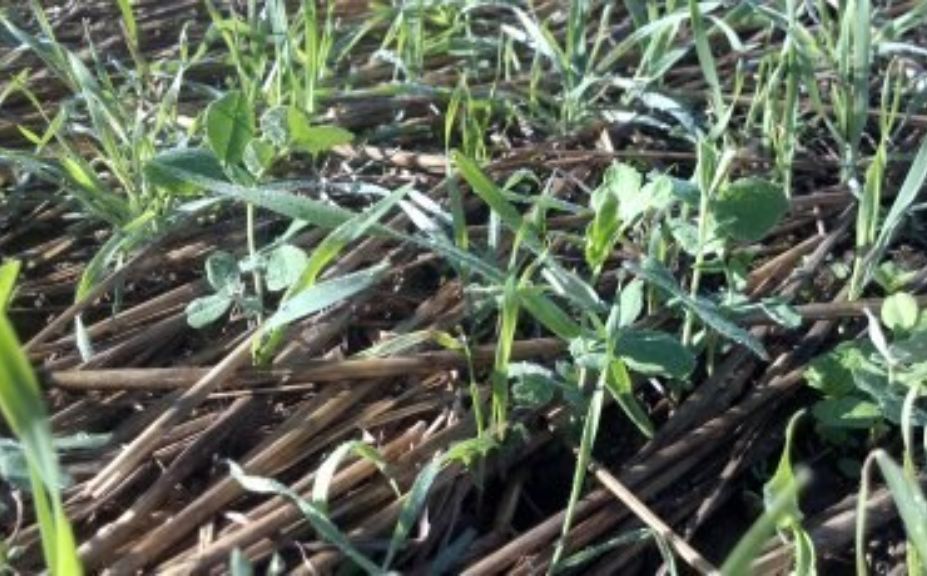
*There is a huge balance that needs to be applied when trying to determine how many acres of food plot you need for your land. What effects this balance? The number of deer, the climate, the % of cover and of course the type of region, including: Wilderness, mixed ag or cover starved. To make sure that you are meeting the needs of your local deer herd, check out "Balanced Food Plot Blends For Small Parcels".
Conclusion
So how many acres of food should your parcel have to support the amount of cover that is available? As a percentage of the total cover on your parcel, somewhere between 2 and 10% will be most likely what your parcel needs. This obviously represents a huge range in terms of cost and resources. However, with some of the examples and discussion presented in this chapter, my hope is that you not only will be much more definitive in your estimate of the total food plot acreage needed, but that you can understand the importance of offering food plots no matter where your property is located. Whether you are building, attracting, holding, moving or hunting a deer herd on any size parcel, in any region, a case can always be made for the benefits of a food plot.
